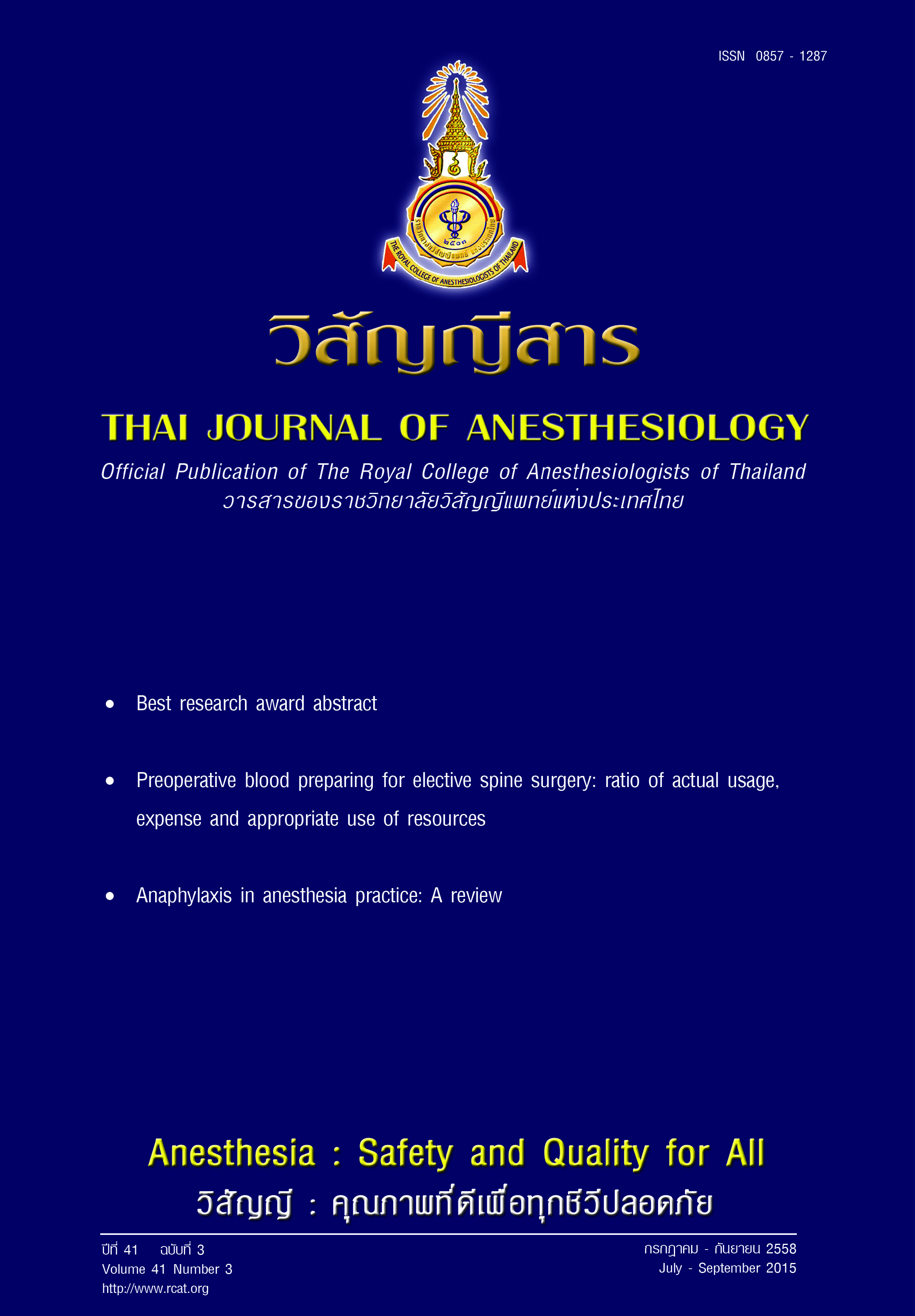Videolaryngoscope Compared to Direct Laryngoscope for Nasogastric Placement
Main Article Content
Abstract
Background: Nasogastric tube (NGT) placement is a basic procedure in clinical practice and able to do by blind technique. The difficulty of this method is challenging even in experienced anesthesiologists. The failure rate in first attempt was approximately 50%(1) with blind method. Though various techniques have been performed to make NGT insertion easier, failure of this procedure still occurs. The impaction of NGT at periglottic area(2) and softening of the tube are key factors to determine the success rate. Usually, mouth opening with direct laryngoscope is the technique of choice when this procedure is unsuccessful with blind method. However, the periglottic view seen by direct vision and narrowing of oral space are the limitation for this approach. We hypothesized that visualization at the periglottic area by a videolaryngoscope, C-MAC D Blade, could improve success rate over the technique using direct laryngoscope.
Methods: Eighty-four adult patients were enrolled in the study and randomized into two groups, videolaryngoscope and direct laryngoscope. After induction and intubation, the participants in videolaryngoscopic group and direct laryngoscopic group were applied by C-MAC D blade and Macintosh blade respectively. Time from the NGT entering the nostril until confirming the proper tip position was recorded and defined as successful insertion. Number of attempts were described as withdrawing the tube out of the nostril and reinserted. Placement more than three times was counted as procedure failure. Bleeding was also observed.
Results: The videolaryngoscopic group was 78.57% in the first- attempt successful insertion whereas direct laryngoscopic group was 30.95% (p < 0.001) . Time for NGT insertion was significantly shorter in videolaryngoscopic group compared with direct laryngoscopic group (80 seconds, 170 seconds, p < 0.01). Five cases were failed by applying direct laryngoscope. However, all of them were succeeded with videolaryngoscope. There were two cases failed by using videolaryngoscope, but the attempts were achieved at the end by placing the guide wire in the NGT. Bleeding was found 40.48% and 4.76% in direct laryngoscopic group and videolaryngoscopic group respectively which had statistically significant in difference.
Conclusion: The videolaryngoscope helps to place the NGT easier, shorter time consuming, lower bleeding complication and higher success rate. Therefore, this method should be considered as an alternative technique when we have difficulty to insert the NGT under conventional technique.


